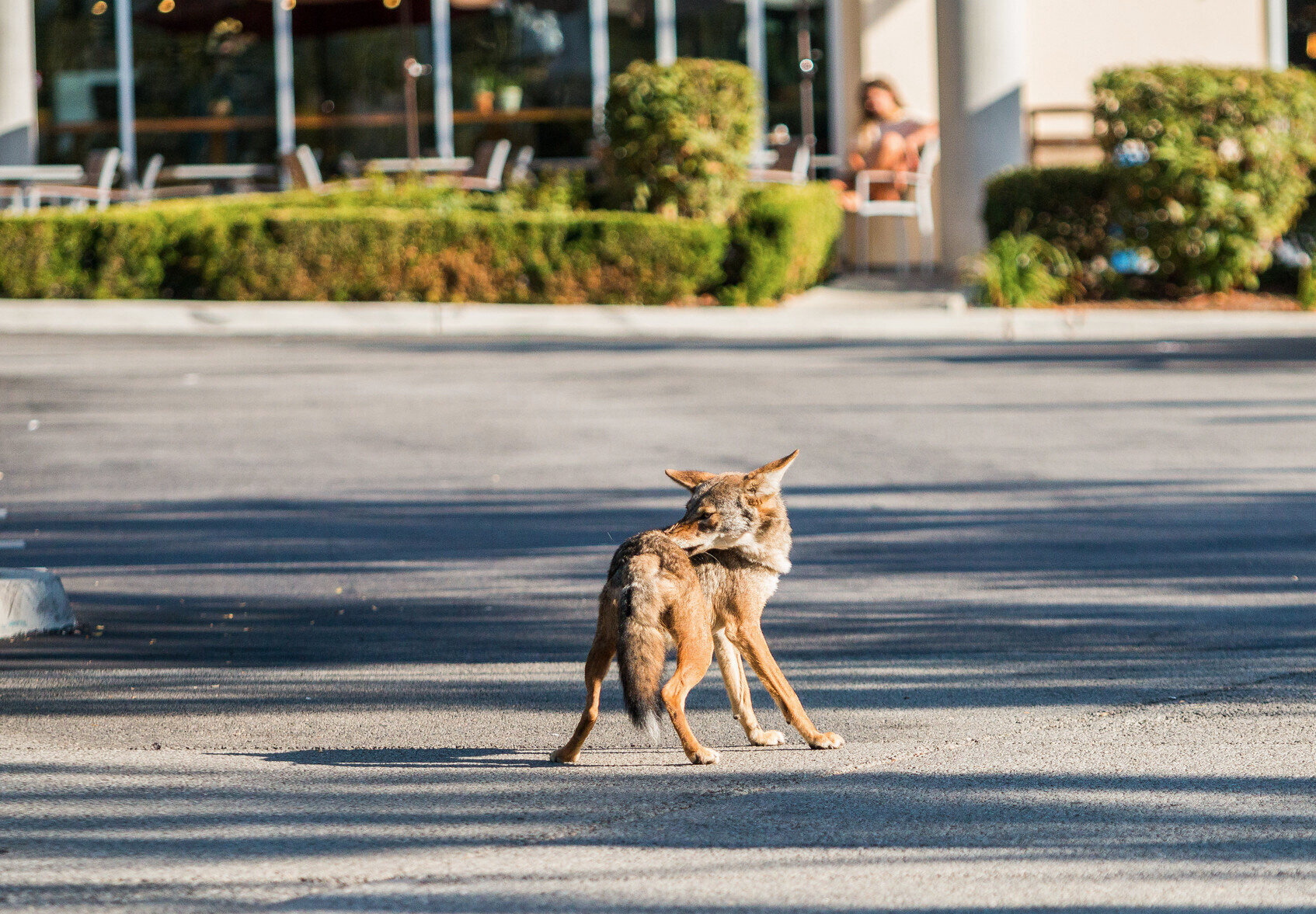The toilet paper shelves aren’t the only places looking barren as a result of the current global climate.
Amid the COVID-19 pandemic currently sweeping through North America, stay-at-home mandates in all major cities are leaving city streets far more empty than normal; and its got many urban-adapted wildlife species making more brazen moves in mankind’s absence.
Its clear the change in societal patterning is having a ripple effect surpassing just the focal point of a virus spread.
While much of the American populous is practicing social distancing, other creatures are taking full advantage of the dampened human presence in urban settings.
Anchor/reporter Dion Lim posted video on her social media page showcasing a brazened coyote stalking a pair of pedestrians and their small dog outside the ABC7 studios in San Francisco this past weekend. The video can be viewed below.
The event was caught on the studio’s security camera. Unbeknownst to the unsuspecting couple, or their dog, the coyote can be observed a slight distance back slinking towards the pair as they continue on their walk. The footage was caught on the news studio’s security camera.
“The couple had no idea.” Lin adds in her post. Lin notes that studio workers scared the coyote off from the pair’s trail before the wild canid had the opportunity to advance.
The mystery will remain as to whether or not the coyote would have actually been successful in chomping down on an easy pet-meal with two adult humans standing in close proximity; but certainly, based on the coyote’s body language, the intent is clear - and one has to ponder if this activity would have still taken place if it were a “normal” SanFran night pre-coronavirus woes.
While the “what if’s” surrounding the situation remain unanswered, the footage is a fascinating depiction of how adaptable coyotes are taking advantage of an unprecedented shift in human behaviors.
While urban wildlife such as coyotes and raccoons continue to slink around in the shadow of desolate streets, another more familiar foe is fairing far less comfortably in the wake of limited human contact.
Renowned rodentologist Bobby Corrigan has noted a shift in the patterns and behaviors of Norway Rats in New York’s city streets - and he asserts its likely to escalate as human-ready fare becomes less abundant.
With fear of contracting the virus striking through the hearts of most Americans, the warnings of CDC specialists to limit human contact and interaction is being heeded. While subways and city streets remain quiet by standard comparison, restaurants are also limiting operations, or in many cases, outright closing their doors. Which means those typically overflowing dumpsters in the back-alleys of urban America are now in dwindling supply; driving food-dependent species such as rats, raccoons, and even those industrialized coyotes to seek a midnight snack elsewhere.
A Norway Rat forages in a discarded flower box. (Photo | David Shankbone)
Add the diminished pressure of a human presence on that concrete landscape - and we’re met with uncharted waters for species of mammalian counterparts whom have grown both dependent and accustomed to our presence.
As if a global pandemic with a hand-sanitizer shortage wasn’t stressful enough, right?
Corrigan notes on Twitter that the city’s rat populations seem to be going as stir crazy as their quarantined food-givers; with seemingly panicked rat colonies engaging in in-fighting and killing each other, openly dispersing in the streets, and adding extra entry pressure to building structure gaps in search of food.
Rural wildlife is also feeling the brunt of the COVID-19 strain. In states like New Hampshire, stay-at-home orders to avoid human contact has driven many people (from near and far) into the woods for open-air recreation. This has placed immense strain on outdoor parks and hiking trails - which inevitably impacts local wildlife populations unaccustomed to the increased human presence once relegated to the urban patches.
Can Wildlife Benefit?
While wildlife adapts to the dramatic shifts in human presence in America, researchers have already began to take note of shifts in areas of Europe.
Blandine Doligez is a researcher from the Laboratory of Biometrics and Evolutionary Biology (LBBE) of the University of Lyon 1, who specializes in the study of birds. She notes, in a report with Euronews, that a government-imposed lock-down, as seen in parts of Europe such as France, can be conducive to wild animals changing their travel and behavioral habits.
Other researchers included in the report, like Jean-Michel Gaillard, director of research at the National Centre for Scientific Research (CNRS), point out that an abundance of otherwise skittish wildlife species and lack of human presence go hand-in-hand.
"The presence of human activity is interpreted (by animals) as something negative, dangerous and faced with this disturbance, animals increase their flight distances or will even completely abandon areas they previously used” he states in the Euronews report.
"But as soon as there is a change in the so-called "landscape of fear" - or the threats which can exist in any given place - animals update their map of threats. Most mammal species know how to adapt to these changes really well. This is called plastic behaviour so when animals observe - and this is very, very, fast - that nobody is there, they will settle down," he added.
(Photo | NPS)
While the shift in human presence is likely to be short-lived (in either weeks or months), the hiatus on human hustle and bustle seems to be giving Europe’s wildlife an unprecedented reprieve from the otherwise “norm”.
Meanwhile, back here in the states, its too early to tell if the break in societal buzz will help or hinder our wild mammalian commensial counterparts. One trend is already becoming pretty clear - when the humans are away, the rats (and coyotes) will certainly come out to “play”.










How are abundant and urbanized wildlife adapting to shifts in human presence? Some species feel the strain while others thrive.